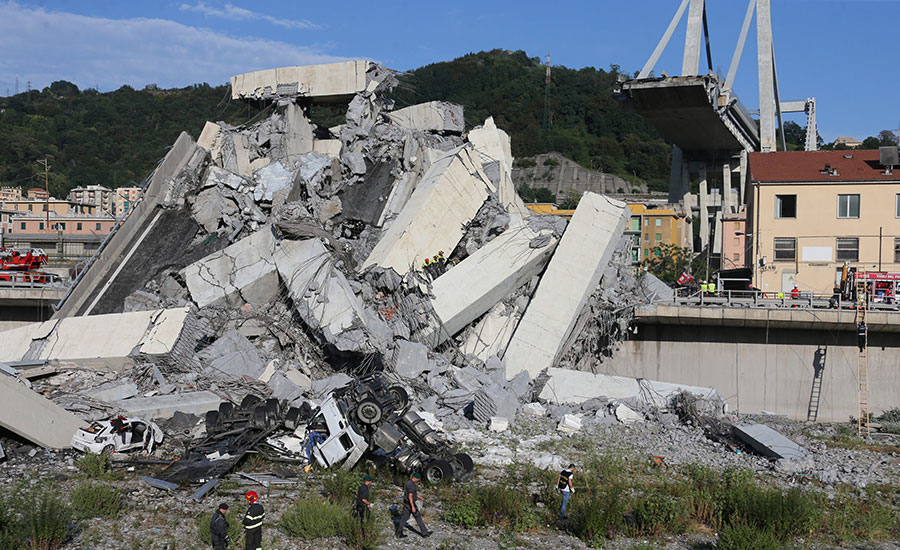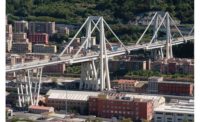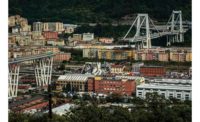At least 39 people are feared dead and more injured under the rubble of Europe's first concrete cable-stayed bridge, which collapsed in Genoa, Italy, on Aug. 14.
More than 200 firefighters and specialist rescue teams struggled through huge amounts of debris left by a collapsed 90-meter-tall A-frame pylon and around 100 m of decks on either side.
"The causes of the collapse will be the object of in-depth analysis as soon as it will be possible to safely access the places," according to the viaduct's operator Autostrade per l'Italia S.p.A.
The company confirms that "work was underway on consolidating the viaduct slab" and a crane had been installed for this work. The structure, which was completed in 1967, has undergone periodic concrete repairs over many years, according to local reports.
Built by Società Italiana per Condotte d'Acqua S.p.A., the roughly 1.1-kilometer-long Polcevera viaduct carries the busy A10 east-west highway over a cluster of railroad tracks, a river, highway and buildings on four cable-stayed spans—each one slightly more than 200 m. The western pair of pylons have been reduced to rubble by the collapse, which occurred during a violent thunderstorm.
Designed by Riccardo Morandi, who died in 1989, the main decks cantilever from the pylons with each end supported by two concrete-encased clusters of cables from each tower top.
Simply supported sets of beams close the stayed spans. The design replicated some features Morandi incorporated on his 8-km-long General Rafael Urdaneta Bridge on Venezuela's Maracaibo Lake, completed a few years earlier.






Post a comment to this article
Report Abusive Comment